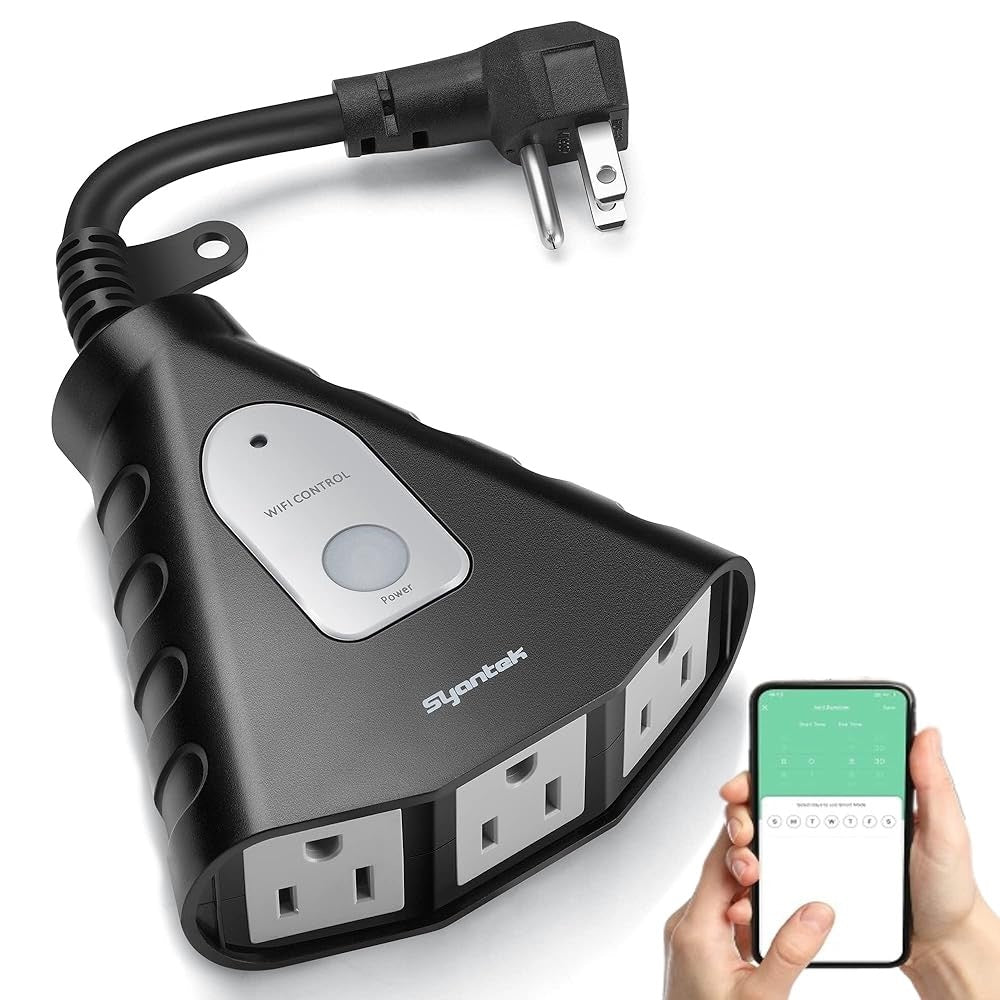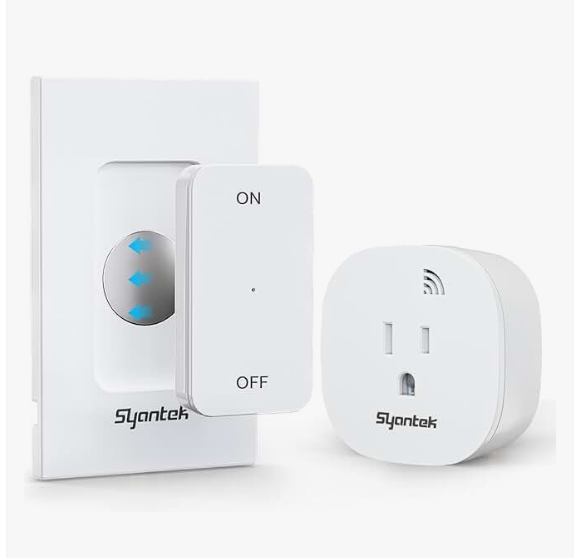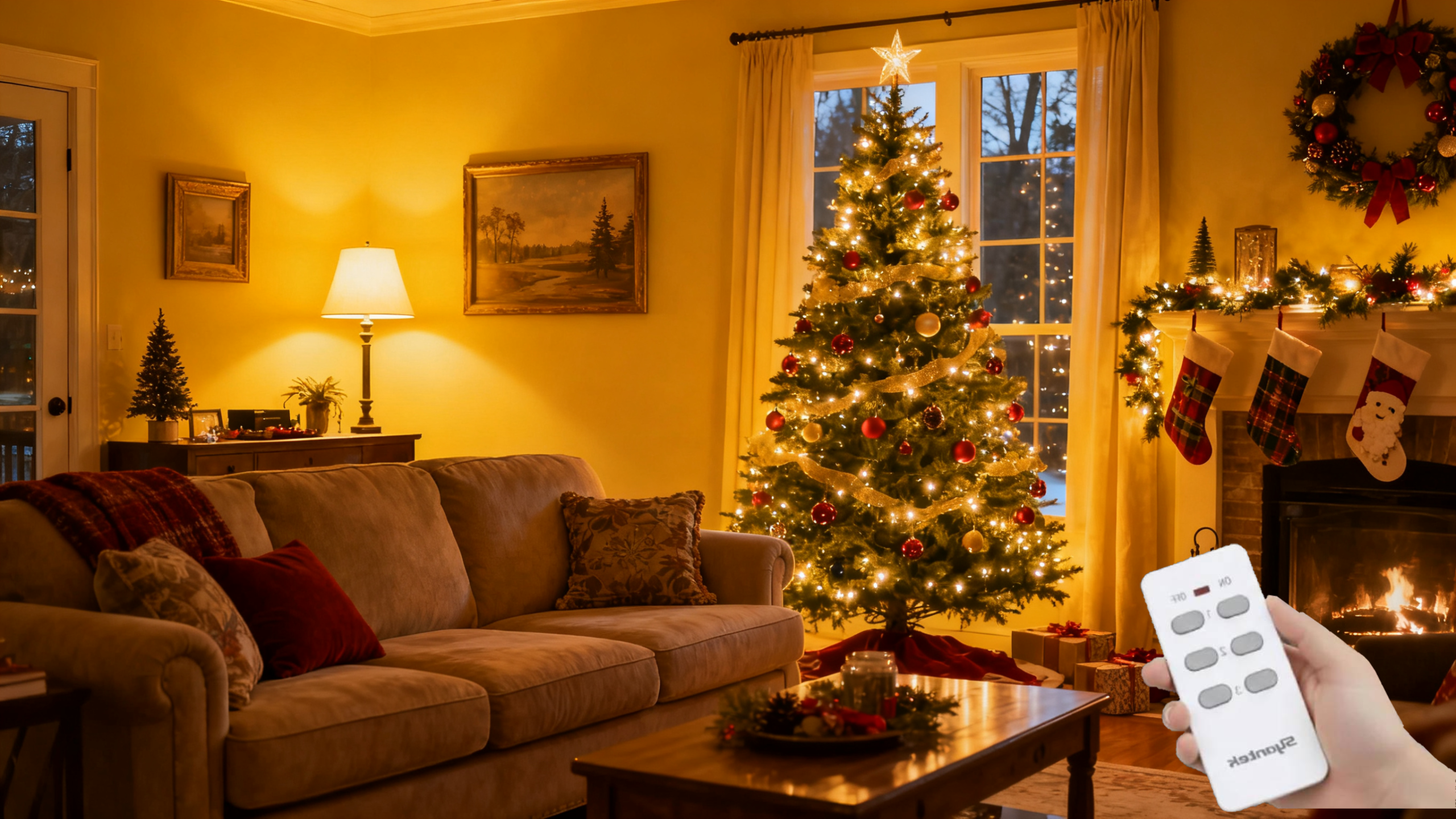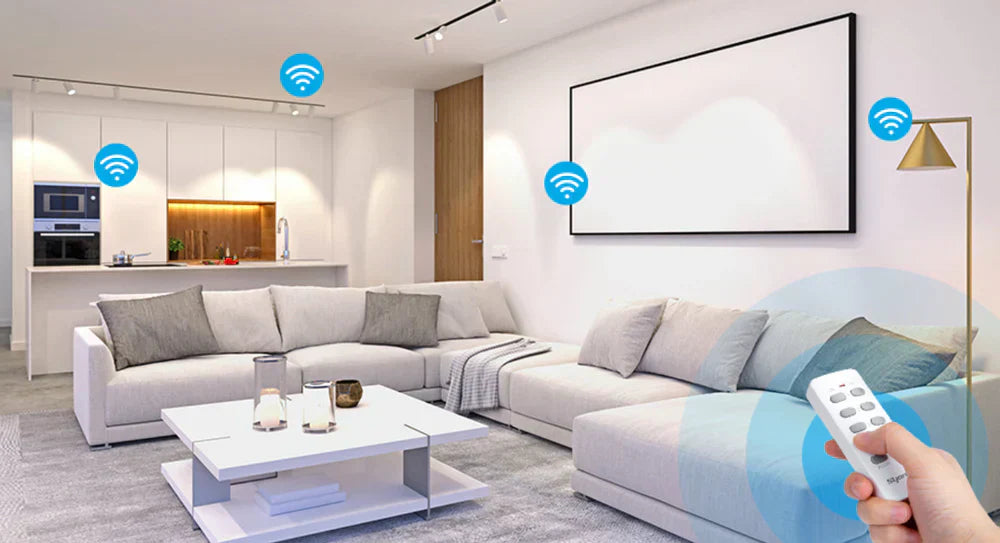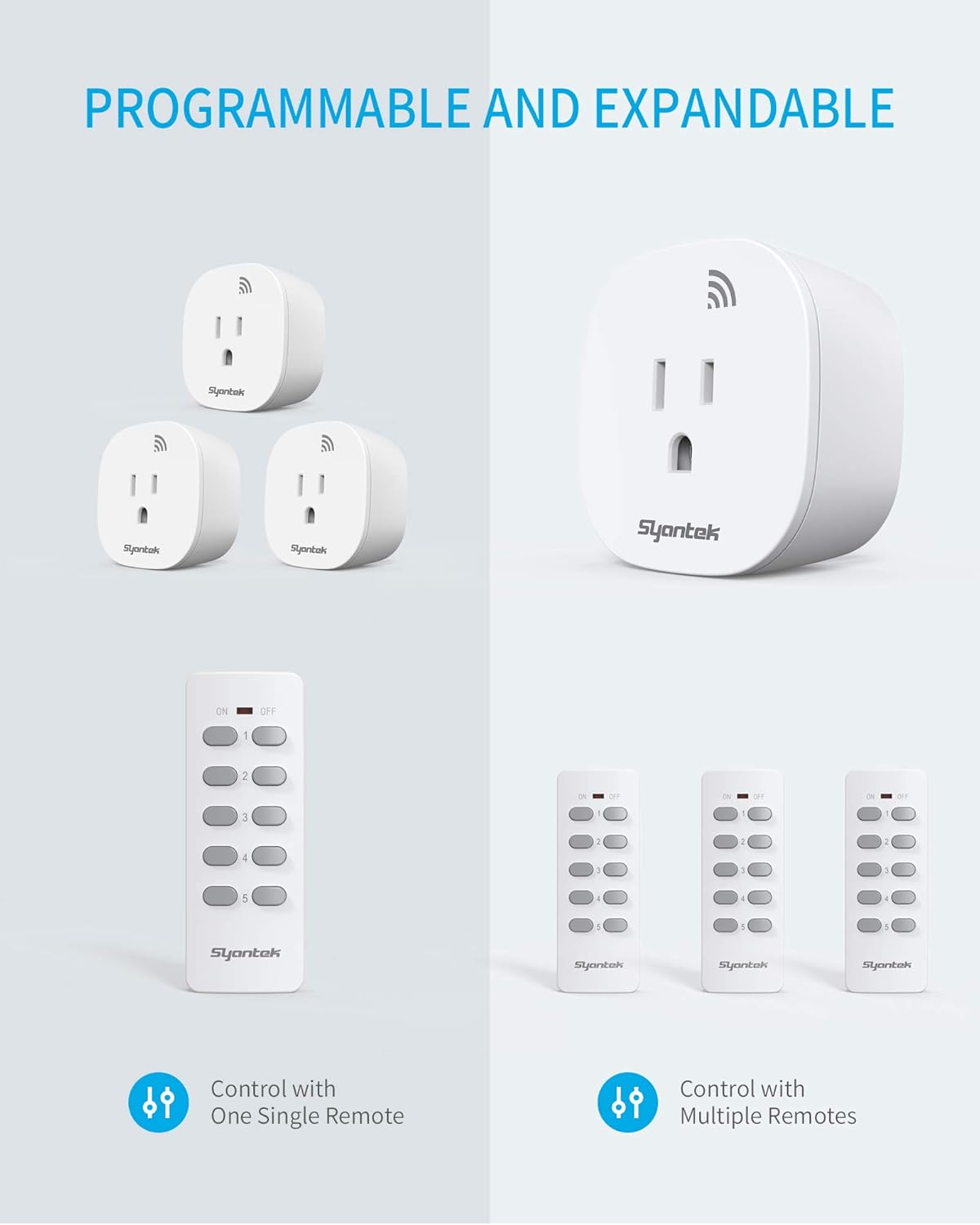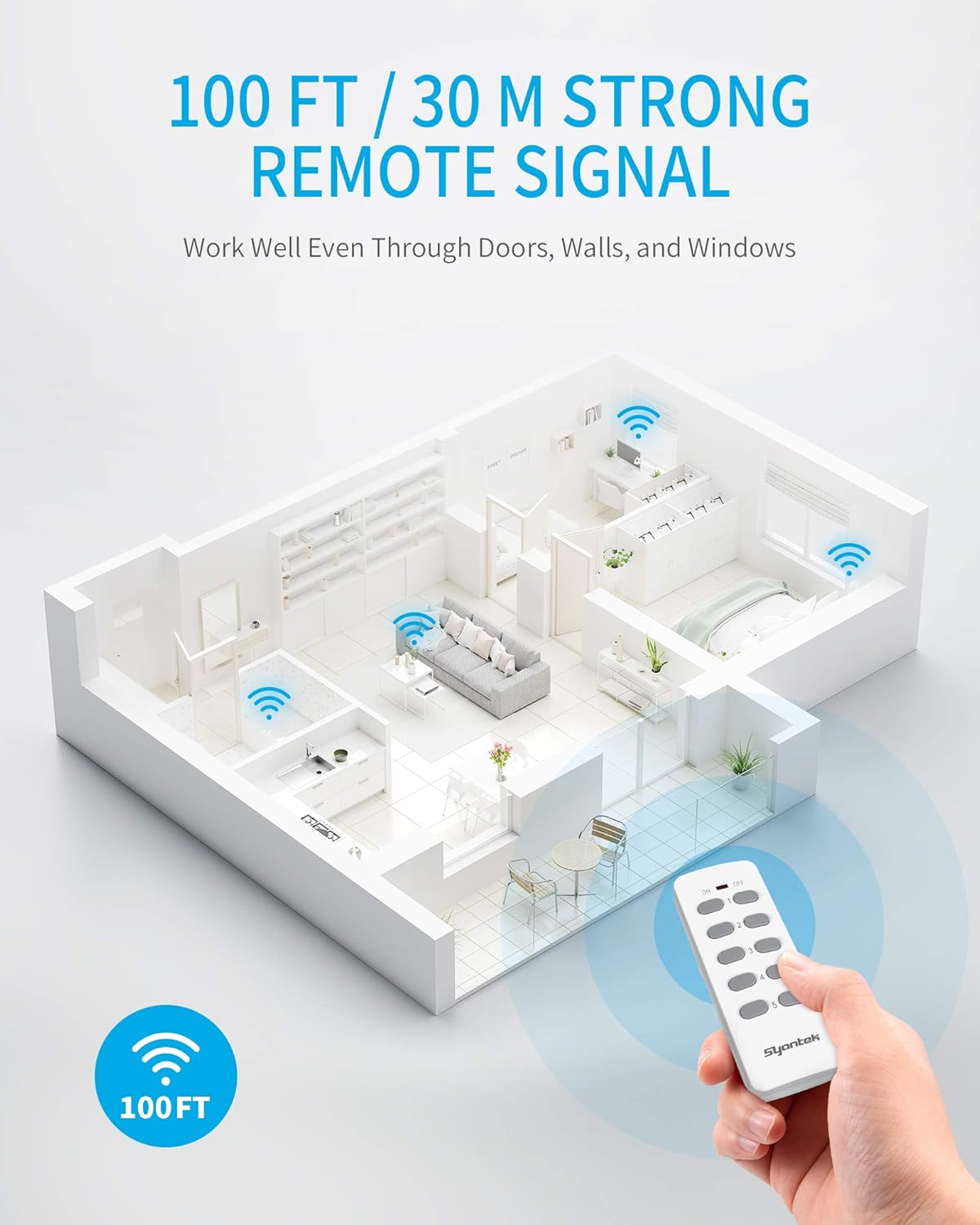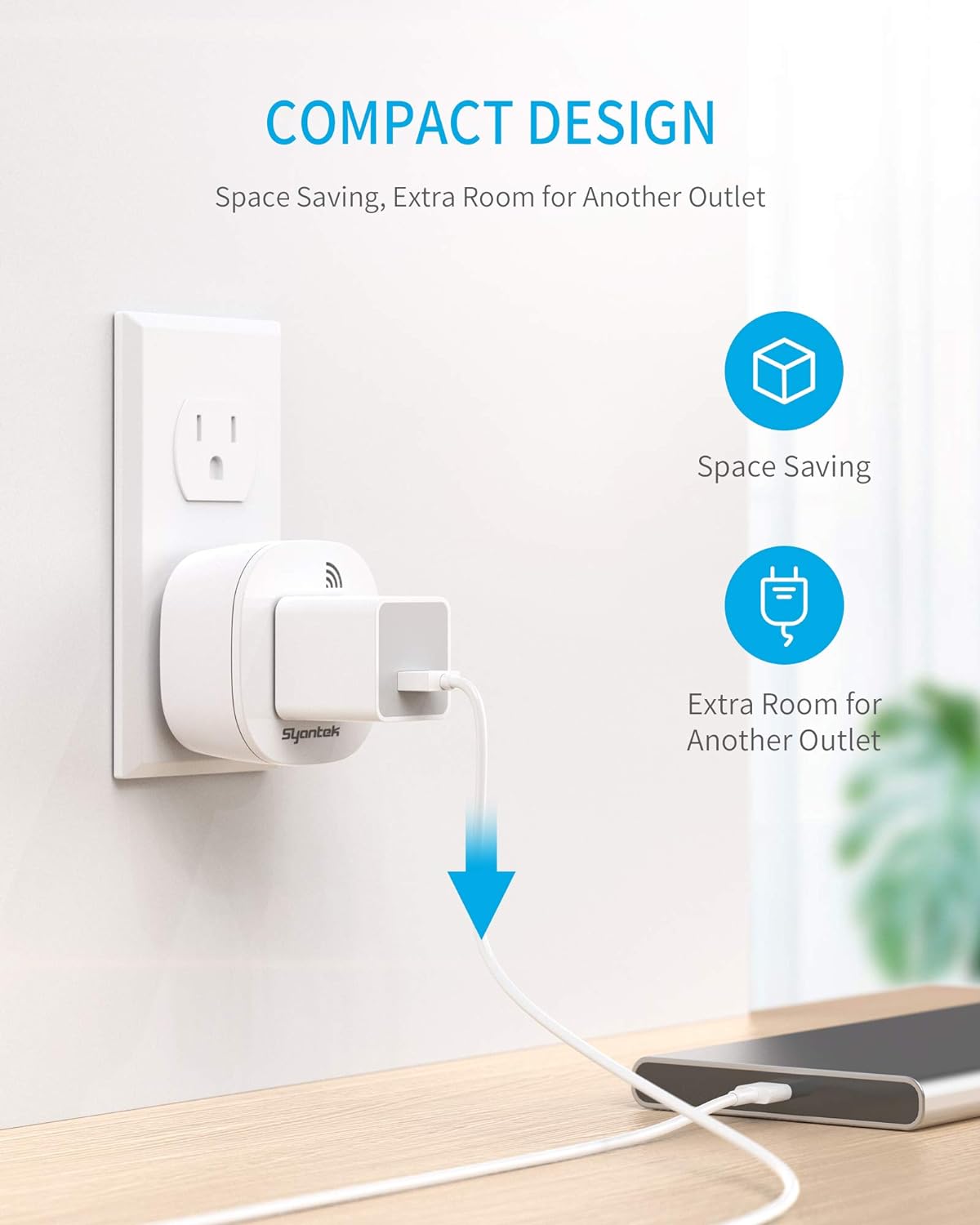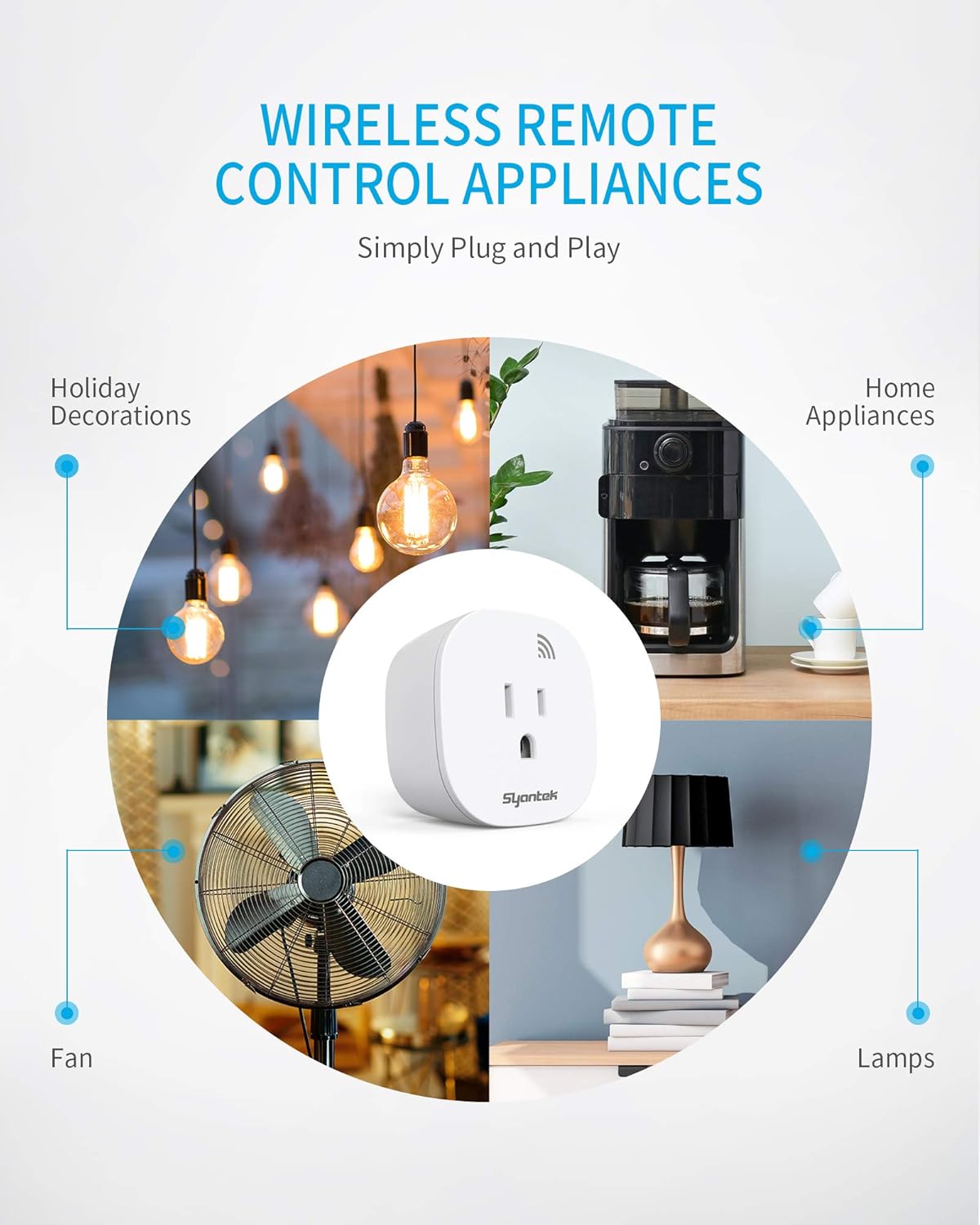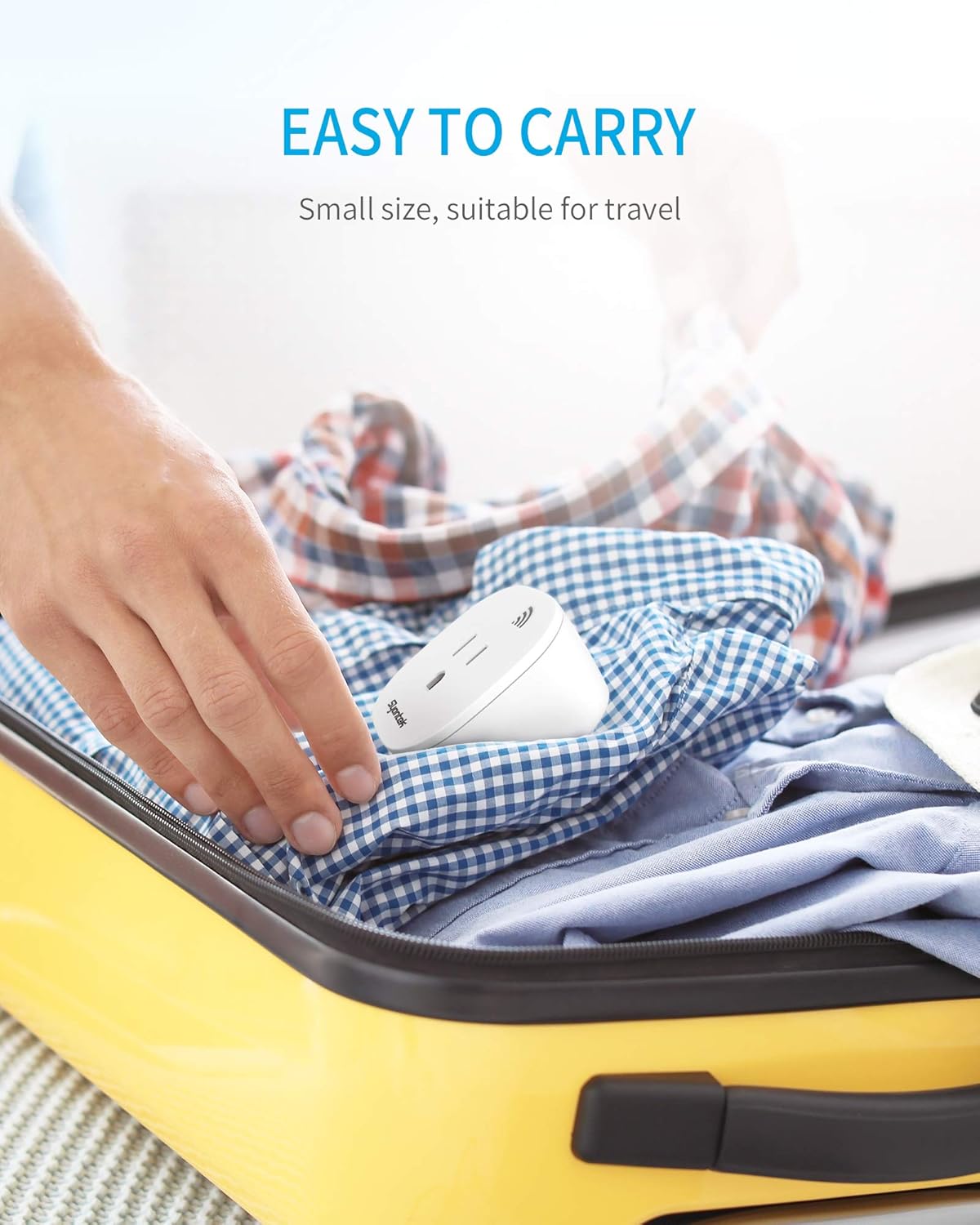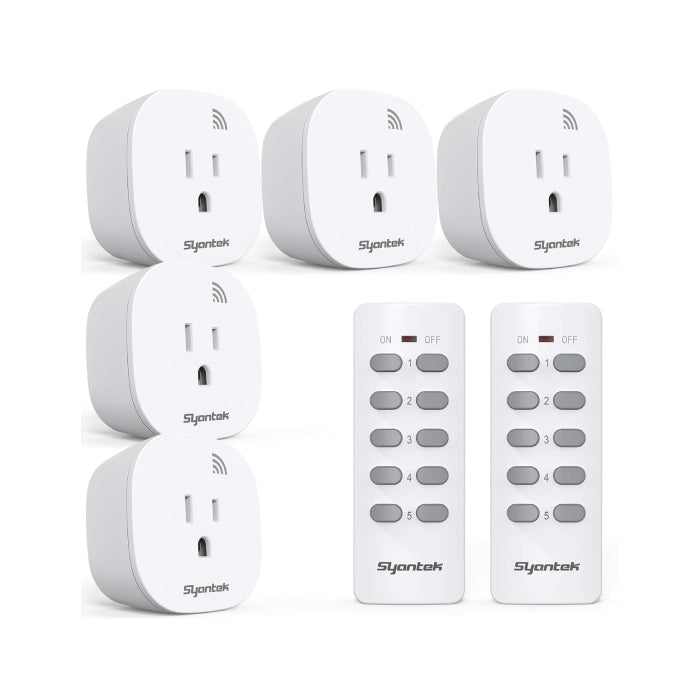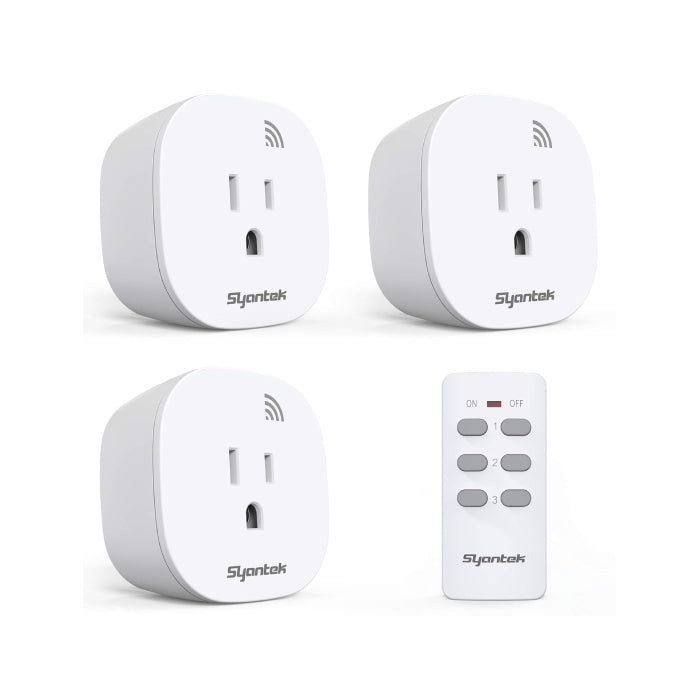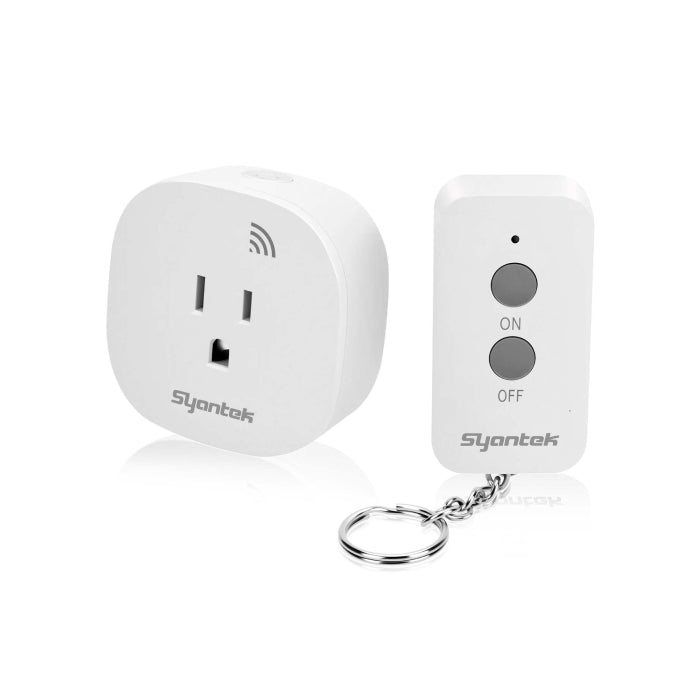Many people share a similar frustration — getting out of bed just to turn off a fan, watching their parents struggle to reach low outlets, or feeling helpless when mobility makes simple tasks difficult. For those who use wheelchairs or live in spaces where outlets hide behind furniture, even switching on a lamp can feel like a chore. Remote-controlled outlets provide an elegant, human-centered solution. They eliminate the need to bend, stretch, or walk to a socket, allowing users to control appliances effortlessly from the bed, sofa, or wheelchair. This not only restores independence but also reduces the need for caregiver assistance, creating a safer and more comfortable daily routine.

This guide will show you how to:
-
Understand how much physical effort remote plugs can actually save—with a real-world accessibility test
-
Choose the right remote-outlet setup based on mobility needs (single user vs multi-room vs caregiver support)
-
Avoid the most common setup mistakes that cause “it’s not working” moments
Mobility first: why remote control matters?
Remote control outlets improve accessibility for users facing the following challenges:
|
User Scenario
|
Typical Challenge
|
Remote Outlet Benefit
|
|
Seniors with reduced flexibility
|
Difficulty bending or kneeling
|
Control lamps without moving from chair or bed
|
|
Wheelchair users
|
Outlets sit too low or behind obstacles
|
Handheld remote works from lap or tabletop
|
|
Post-surgery recovery (e.g., back/knee)
|
Stretching risks pain or re-injury
|
Zero-motion control supports recovery
|
|
Chronic pain/fatigue sufferers
|
Energy is limited
|
Reduces physical strain in daily routines
|
|
Pregnant women in later stages
|
Forward bending is uncomfortable
|
Safe, no-stretch control from bed or sofa
|
|
Users in compact rooms
|
Outlets hidden behind beds or couches
|
Remote use eliminates need to move furniture
|
In many homes, lights, fans, or heaters are plugged into inconveniently low or hidden outlets. For users with mobility limitations, every unnecessary action—standing, bending, or rotating—adds friction and anxiety. At this point, remote control outlets are not just a convenience upgrade—they are an accessibility solution.
Accessibility impact test: how much movement remote control outlet actually saves?
To understand the difference between a standard wall outlet and a remote control outlet, we simulated real-world use cases frequently mentioned by seniors and mobility-limited users.
We measured how much physical effort is required on a scale of 1 (no effort) to 5 (high effort/pain/discomfort).
Effort comparison: traditional outlets vs remote control outlets
|
Scenario
|
Traditional Outlet (Effort Score 1–5)
|
Remote Outlet (Effort Score 1–5)
|
What changes
|
|
Turning off a bedside lamp from bed
|
4 – requires standing up
|
1 – press button from pillow
|
No sitting up or reaching required
|
|
Unplugging a fan behind a sofa
|
5 – bending + stretching
|
1–2 – handheld control
|
Eliminates awkward movements
|
|
Wheelchair user accessing wall plug
|
4 – poor reachability
|
1 – remote on armrest
|
No repositioning needed
|
|
Post-surgery patient avoiding bending
|
5 – risk of strain
|
1 – remote held in hand
|
Protects back/knee recovery
|
The study show that remote-controlled outlets can reduce physical strain by as much as 80–90% for users with limited mobility, making daily routines far more comfortable. Beyond convenience, they also play an important safety role — helping to prevent falls that often occur during nighttime movement or while navigating tight, cluttered spaces.
Choosing the wireless outlet kit: single-user vs shared or multi-room
Not all mobility-friendly setups are the same. Some users only need remote control from their bedside; others may require multiple control points across different rooms—or even shared control between patient and caregiver.
Quick scenario-based kit selection:
|
If you…
|
Best fit
|
Why
|
|
Are a single senior using 1–3 lamps from bed or sofa
|
3-Outlets + 1 Remote
|
Simple, less confusion
|
|
Want to create a “bedside control hub”
|
3-Outlets
|
Ideal for single-zone convenience
|
|
Need control in bedroom + living room
|
5-Outlets + 2 Remotes
|
One plug per zone, multiple remotes for easy access
|
|
Live with caregiver or partner who also needs a remote
|
5-Outlets + 2 Remotes
|
Each person gets their own remote
|
|
Control multiple recovery/medical devices (e.g., lamp, fan, heating pad)
|
5-Outlets
|
Provides expansion room
|
|
Want one-button “goodnight/off” control for all lamps
|
5-Outlets
|
Easily create master group button
|
Remote Control Outlet Misuse Checklist: Quick Fixes Before Replacement
Most “it stopped working” moments are caused by quick-to-fix placement or pairing errors—not product failure. Here’s the ranked list of common misuses and how to fix them in seconds.
Misuse Speed Ranking (Top issues first):
|
Rank
|
What goes wrong
|
What it causes
|
How to fix
|
|
#1
|
Plug is hidden behind metal or too low to the ground
|
Weak RF signal, delayed response
|
Lift plug slightly or move it away from metal frames or cabinets
|
|
#2
|
Grouped too many outlets to one button by accident
|
Multiple devices turn on unexpectedly
|
Re-pair each device intentionally (pair 1→1 first)
|
|
#3
|
Wrong button gets pressed (labels missing)
|
User confusion
|
Add sticker dots or label A/B/C clearly
|
|
#4
|
Remote placed too far or blocked by objects
|
Missed commands
|
Test from user’s actual seating/lying position
|
|
#5
|
Battery (CR2032/A23) is nearly drained
|
Random misfires
|
Replace early rather than waiting for total failure
|
|
#6
|
The appliance switch itself is OFF
|
Plug appears “broken”
|
Ensure the lamp/fan switch is toggled to ON while pairing
|
If your remote outlet stops responding, a quick 90-second recovery process usually brings it back to normal. First, ensure the connected device’s physical power switch is turned ON. Then, try pressing the remote buttons from a closer distance. If that doesn’t work, adjust the plug’s position by slightly raising or angling it outward for better signal reception. When the remote’s clicks feel weak, replace the battery. Finally, if all else fails, re-pair the outlet by long-pressing the plug’s button and assigning the correct remote key again. In most cases, simply checking the power, distance, or placement resolves the issue without any need for re-pairing or returns.
FAQS
Q1. Can two remotes control the same plug? Yes, but it may cause confusion if unintentional. If it happens, clear that plug and re-pair it with only one remote.
Q2. Is it okay for caregivers and users to share different remotes? Yes. The 5-outlet kit includes two remotes, which are ideal for shared use .
Q3.Do I need Wi-Fi, Bluetooth, or a smartphone? No. These outlets work instantly with RF remotes—no app or internet needed.
Q4.Can I still control one lamp separately if it’s grouped with others? Yes. Assign another plug to a different button if you want a single device to act independently.
Ready to simplify life? Here’s how to get started
If you’ve ever sighed at the thought of getting up just to turn off a lamp—or watched a loved one struggle with daily switches—it’s time to make your home smarter and safer.
Make everyday comfort one click away.
👉 Shop Remote Control Outlet Kits ↗ – Control Your Devices Remotely



